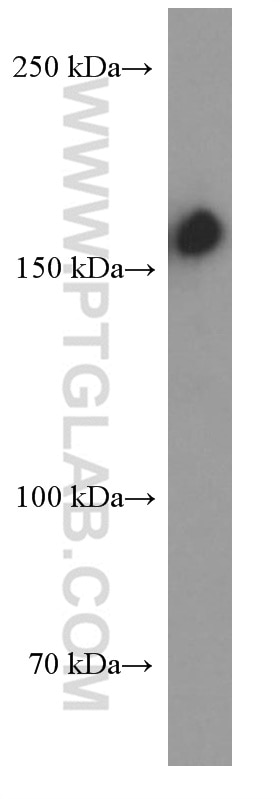Anticorps Monoclonal anti-CD109
CD109 Monoclonal Antibody for WB, Indirect ELISA
Hôte / Isotype
Mouse / IgG1
Réactivité testée
Humain
Applications
WB, Indirect ELISA
Conjugaison
Non conjugué
CloneNo.
2H8G7
N° de cat : 60179-1-PBS
Synonymes
Galerie de données de validation
Informations sur le produit
60179-1-PBS cible CD109 dans les applications de WB, Indirect ELISA et montre une réactivité avec des échantillons Humain
| Réactivité | Humain |
| Hôte / Isotype | Mouse / IgG1 |
| Clonalité | Monoclonal |
| Type | Anticorps |
| Immunogène | Peptide |
| Nom complet | CD109 molecule |
| Masse moléculaire calculée | 162 kDa |
| Poids moléculaire observé | 162 kDa |
| Numéro d’acquisition GenBank | BC152996 |
| Symbole du gène | CD109 |
| Identification du gène (NCBI) | 135228 |
| Conjugaison | Non conjugué |
| Forme | Liquide |
| Méthode de purification | Purification par protéine A |
| Tampon de stockage | PBS only |
| Conditions de stockage | Store at -80°C. 20ul contiennent 0,1% de BSA. |
Informations générales
CD109, also named as CPAMD7, is a member of the alpha2-macroglobulin/complement superfamily. It is a glycosylphosphatidylinositol (GPI)-linked cell surface glycoprotein of approximately 170kd which is found on the cell surface of platelets, activated T-cells, and endothelial cells. CD109 binds to and negatively regulates signaling of transforming growth factor beta (TGF-beta). CD109 has been identified as part of the TGF-beta receptor system in human keratinocytes. Up regulation of CD109 expression has been observed in several different types of tumor.CD109 is a glycosyl-phosphatidylinositol-anchored glycoprotein that is a member of the a2-macroglobulin/C3, C4, C5 family of thioester-containing proteins. There're 2 forms of 150 (p150) and 120 kDa (p120) exist due to proteolytic degradation from a 180 kDa form. The antibody can recognize all these 4 isoforms.



